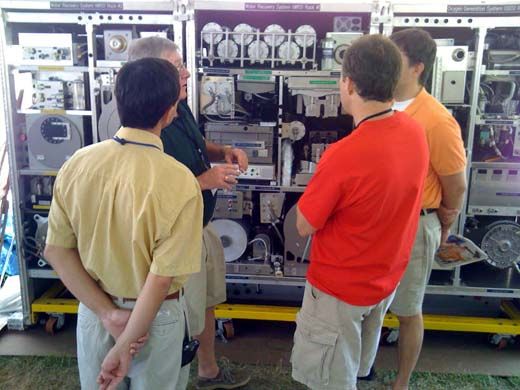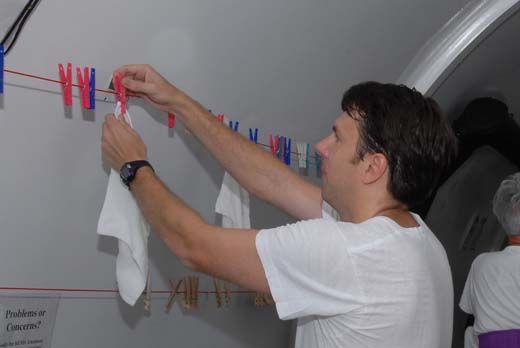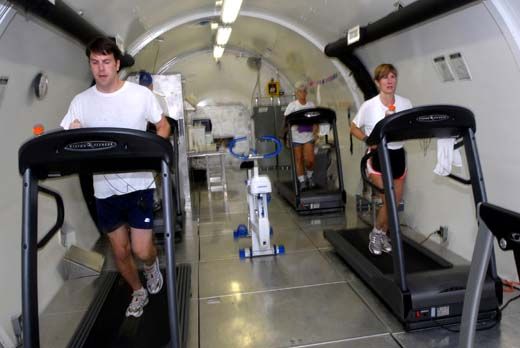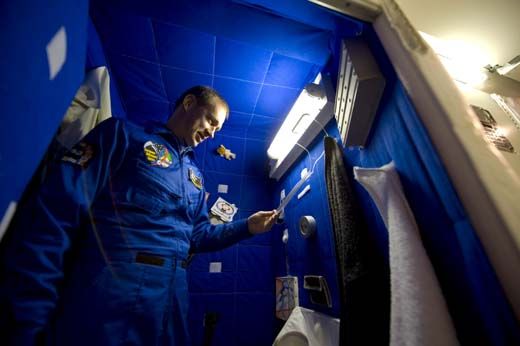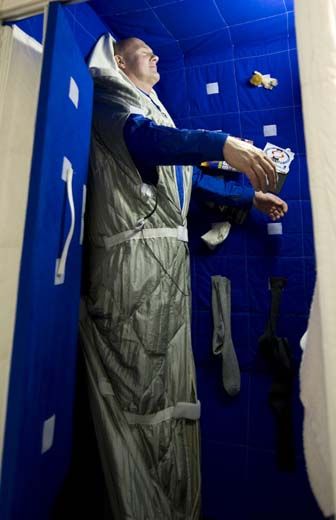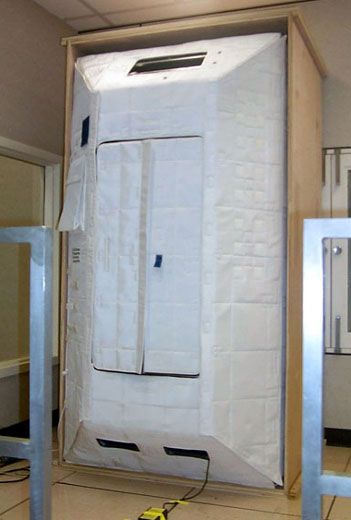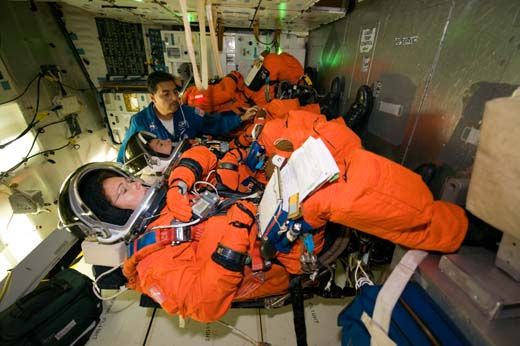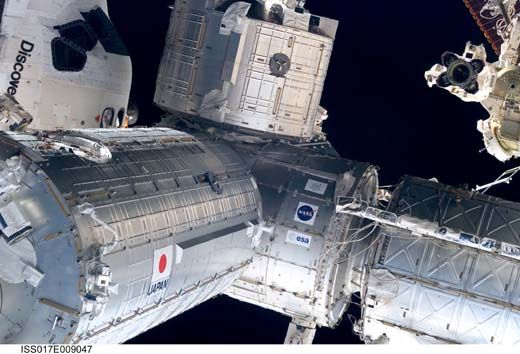Company Expected
Three more people will soon move into the International Space Station—and they’ll be drinking, um….
/https://tf-cmsv2-smithsonianmag-media.s3.amazonaws.com/filer/six-crew-flash.jpg)
Forget NASA’s search for water on Mars. A more pressing search has been going on for years aboard the International Space Station.
Each of the three crew members uses about a gallon of water a day: .43 gallon for drinking, .21 gallon for hydrating dried foods, .21 gallon for brushing teeth, and .13 gallon to flush the toilet. For every six-month tour of duty—or expedition, in space station parlance—a three-person crew needs more than two tons of water to stay alive. Even though that’s only one-tenth what they would typically use on Earth, it’s still a lot to haul into orbit. And with NASA planning to double the station crew to six beginning next year, something had to give.
That’s why space shuttle Endeavour, due to launch on November 14 for a two-week resupply mission to the station, will carry a record 32,000 pounds of payload, including a first-of-its-kind water recovery system designed to turn waste water—mostly urine—into potable water on a weekly cycle.
The refrigerator-size unit will use a rotating distillation assembly that separates liquids in the weightlessness of orbit. Urine is 95 percent water; once the water is mostly separated out, it joins other waste water (sweat, used wash water) for processing that removes gases and solids such as hair and lint. The water then goes through a series of filtration beds and a high-temperature catalytic process, resulting in water pure enough to drink. The system will also split water into oxygen and hydrogen, producing breathable oxygen.
Though it will recapture only about 65 percent of the water that would otherwise be discarded, the hardware should reduce the amount of water and other supplies lifted to the station by 15,000 pounds a year. And it allows three more crew members to move in, starting May 2009.
Astronaut Don Pettit, who lived on the station for six months beginning in November 2002 (see “If I Were to Land on Mars,” Oct./Nov. 2008) and who will be making his second shuttle flight, says that his STS-126 mission won’t seem particularly sexy. “When we leave, [the station] will look the same on the outside. We’re like the plumbers and electricians and cabinetmakers doing the interior construction.”
Endeavour’s crew of seven will install two phone-booth-size sleep stations, a Russian toilet, and a treadmill. They’ll also bring up a combustion science facility and two more racks of research equipment.
And they’ll bring the kitchen sink, literally—a new galley, complete with the first station refrigerator intended for food instead of scientific samples. In the past, says Pettit, the crew could stash a couple of drink bags in the Soyuz docking ring, which is cooler than the rest of the station’s modules. But that only gets down to about 55 degrees Fahrenheit, he says. The rack that holds the new fridge also will have slots for a dispenser able to dispense hot potable water into both NASA and Russian food containers. It will house two food warmers, each about the size of a large briefcase.
One of the Endeavour astronauts, mission specialist Sandra Magnus, will stay behind on the station for half a year as flight engineer, replacing Greg Chamitoff, who will fly home in her seat. Magnus and space station crewmates Mike Fincke and Yury Lonchakov will spend much of their time setting up and testing the new hardware.
Pettit calls the water processing racks “the jewel of what we’re bringing.” He knows about water conservation: During his 161 days on Expedition 6, when he brushed his teeth, he swallowed every ounce of the toothpaste. “A little water from a drink bag helps it down,” he says. He used pre-packaged, pre-moistened towelettes about three feet long—“long enough to see-saw across your back”— in lieu of a shower. Then he hung them next to the condenser, which extracted their precious ounces of water. The station already has a good system for extracting moisture from the air, he says. “When I was on station, we took yesterday’s sweat and breath and turned it into today’s coffee.” In fact, the only water he and his fellow astronauts lost was in urine.
When talking to the engineers and scientists who built the water recovery system, he suggested they build a prototype on the ground and show their confidence by testing the urine-turned-drinking water themselves. Chuckling, he recalls that they countered, “Oh, that’d be too expensive.” The STS-126 astronauts will bring back samples for analysis on the ground, before the astronauts on the station are asked to drink it.
Just as enthusiastic as Pettit about the station’s addition is Marybeth Edeen, manager of the Hardware Development Office and Space Station Vehicle Office at NASA’s Johnson Space Center in Houston. Edeen has been watching the water recovery system, which was built at the agency’s Marshall Space Flight Center in Alabama, develop for a decade. For her, the most fascinating aspect is the compressed timeline of the water purification cycle. “Once we get all this hardware up and operational,” she says, “once we get the water cycle going, from the time it’s processed through the body and then through the system is about seven to eight days. On Earth it’s about 5,000-plus years from the time you drink water and pee into the system until that same drop of water comes back around.”
The new system is a major leap forward, according to Pettit. “Processing urine is something scientists have done on Earth in small doses,” he says. “But I’m unaware of any isolated, frontier-type situation where you take yesterday’s waste water and recycle it. Submarines, Antarctic exploration, whatever—nobody recycles their urine. It brings up a nose-wrinkle factor. But we can’t go to the moon and Mars if we don’t find a way to recover water.”
